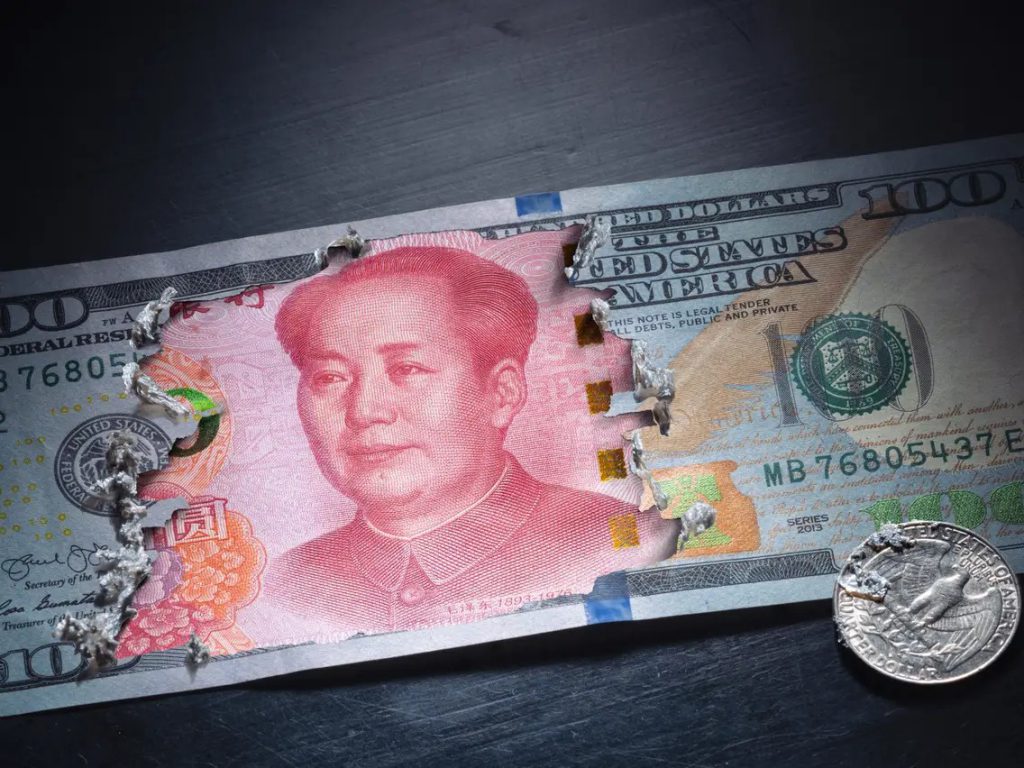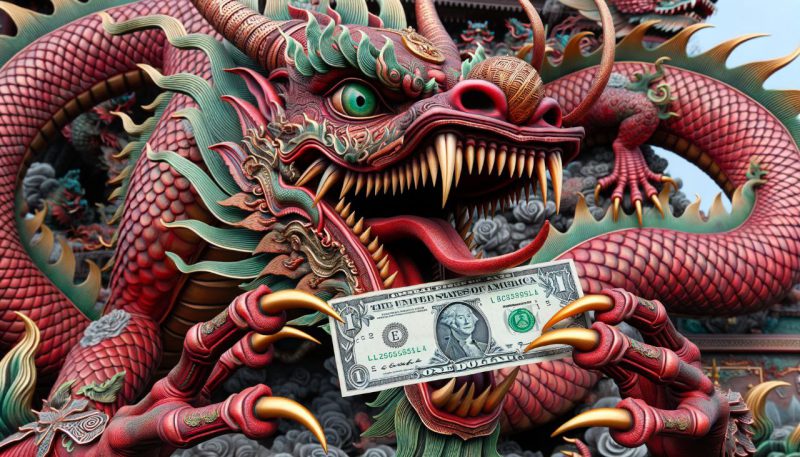The world’s financial dynamics are evolving at a rapid pace, favoring the rise of new currencies against the mighty US dollar. There was a time when the US dollar had no enemies, no credible foes to question its mettle. Now that the currency dynamics have evolved, the world is now witnessing a pool of new currencies giving stiff competition to the dollar. In such an instance, the Chinese Yuan is emerging as the ultimate challenger, blocking the US dollar from dominating the world currency narratives. Why is the yuan beating the US dollar down again and again? Let’s find out.
Also Read: Shiba Inu Price Prediction: How $10K Could 3.5x and Make You a Whale by 2027
Is The US Dollar Collapse Under Works?


The US dollar is experiencing one of its worst nightmares, the declining stature and valuation that continue to derail and hamper its prestige. Per Bravos Research, the US dollar’s purchasing power has tumbled and is now on the verge of a deeper collapse. This collapse might be triggered by the indifference documented between the US dollar and bond yields, hinting at a stark currency plummet.
“BIG divergence between US dollar and bond yields. Either rates must rise further to stabilize the dollar. Or the dollar is at real risk of a deeper collapse“.
The research portal explained how the dollar is at risk of a full-blown collapse and is facing heavy sell pressure due to Trump’s aggressive tariff regimes.
“2/ The US dollar index (DXY) has faced heavy selling pressure since Trump’s new tariff announcement. Something has happened that is suggesting that this decline in the US dollar could be a lot more dangerous than it looks. You see, DXY usually moves in line with US bond yields. Which reflects the return on holding US dollars. That relationship makes sense. As yields rise, the dollar should strengthen. But for the first time in years, that connection is starting to break.”
2/ The US dollar index (DXY) has faced heavy selling pressure since Trump’s new tariff announcement
— Bravos Research (@bravosresearch) May 14, 2025
Something has happened that is suggesting that this decline in the US dollar could be a lot more dangerous than it looks pic.twitter.com/1rpmvwZwdj
All Hail Chinese Yuan: Should We Truly?
As the US dollar continues to weaken, alternative currencies like the Chinese yuan are gaining widespread exposure in its wake. Per Finimize, the recent yuan hike can be attributed to the US-China tariff truce. This truce, or temporary halt as one may call it, has fueled optimism in the Chinese economy, prompting the yuan to inflate in the process.
“The yuan’s rise comes on the heels of a tariff truce that has fueled optimism around China’s economic prospects, prompting investment banks like Citi and UBS to boost their GDP forecasts for 2025.” Finimize later shared.
At the same time, the People’s Bank of China has also taken measures to keep the yuan steady at 7.19 against the US dollar. This development is also helping the yuan counter global currency fluctuations.
“The People’s Bank of China (PBOC) took preemptive steps by setting the midpoint for the yuan at 7.1938 per dollar, firmer than market forecasts, to manage the currency’s strength and steer clear of volatility.”
Also Read: Charlie Munger Was Right: A $275 Stock Can Build Your First $100K
The Chinese Currency Is Wooing the World
Furthermore, the Chinese yuan continues to gain popularity against the US dollar on a global basis. Per Reuters, the recent dollar crisis has compelled investors to swap their dollars for regional currencies, preferably the yuan.
“As the strong dollar story reverses. More Chinese exporters may convert their foreign exchange receipts and deposits to the yuan in coming months… The weaker dollar can provide a window of opportunity for the People’s Bank of China (PBOC). To act more in monetary policy, as the pressure on capital outflows will be less severe.” Said Gary Ng, senior economist at Natixis.
That being said, the Chinese Yuan is currently one of the trending currencies to explore among nations. With US sanctions on Russia, the nation has long been using the yuan to bypass sanctions levied by the US.
China is also busy internationalizing the yuan among Southeast Asian countries in its bid to bolster the region’s currency.
In addition to this, the talks of a potential petroyuan are also on the cards, as China looks forward to boosting its currency dominion across the globe.
“BRICS—comprising Brazil, Russia, India, China, and South Africa—has been expanded by five important new members. Saudi Arabia, United Arab Emirates, Iran, Egypt, and Ethiopia… Saudi Arabia, the world’s main supplier of petrol, has also joined Project mBridge, the Bank for International Settlements’ (BIS) digital currency arrangement. The country has made comments about considering alternatives to the present dollar-based oil payments system. And being open to using the petroyuan for oil settlements.” As stated by Herbert Poenisch, senior fellow at Zhejiang University and a former senior economist at the Bank for International Settlements.
Also Read: Exclusive: How the US Can Avoid De-Dollarization, Analyst Explains





